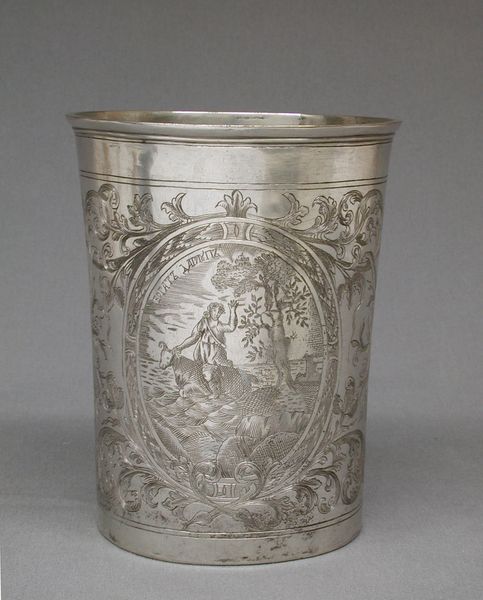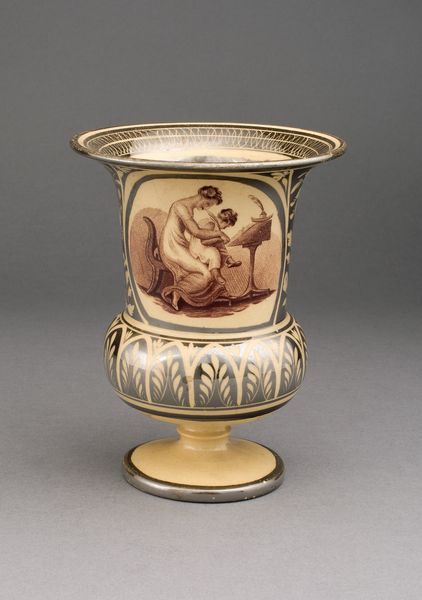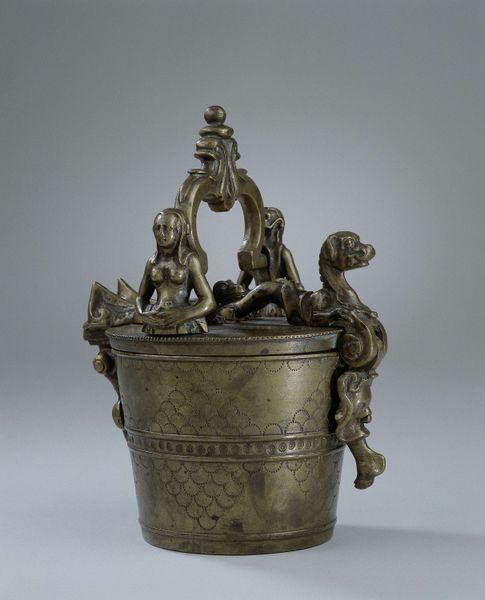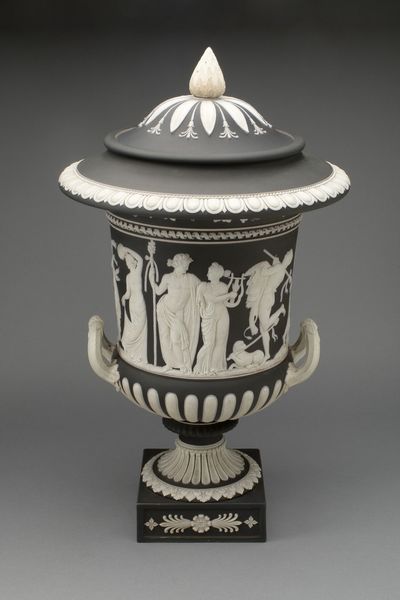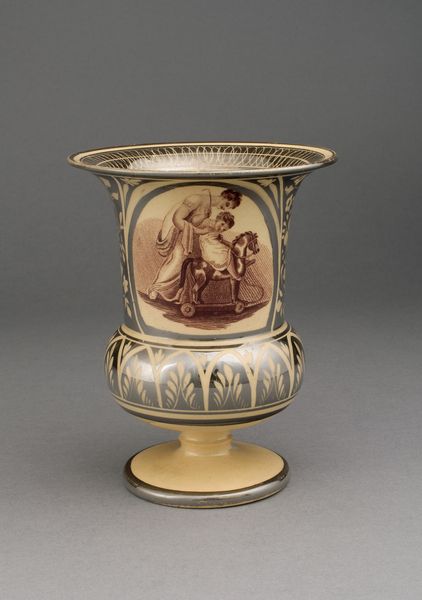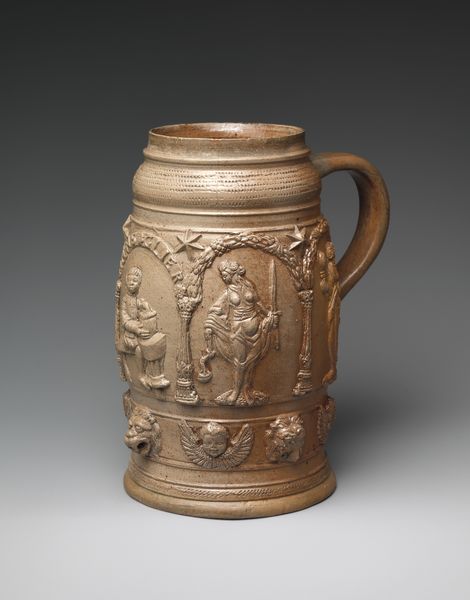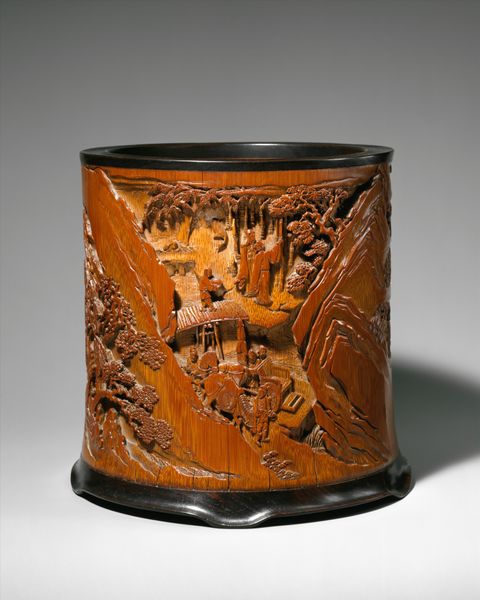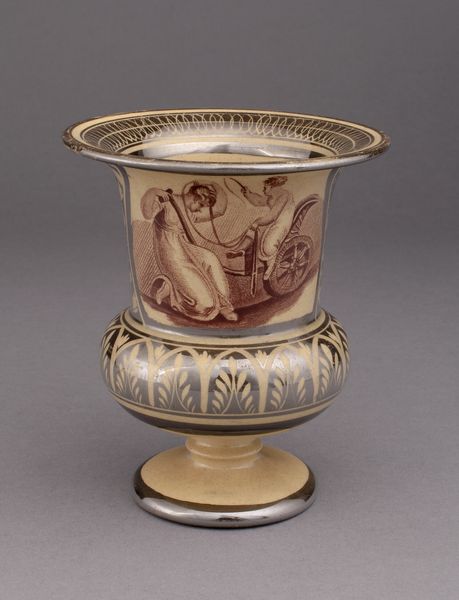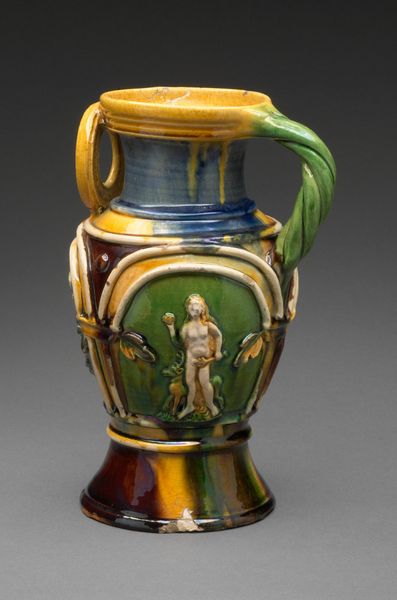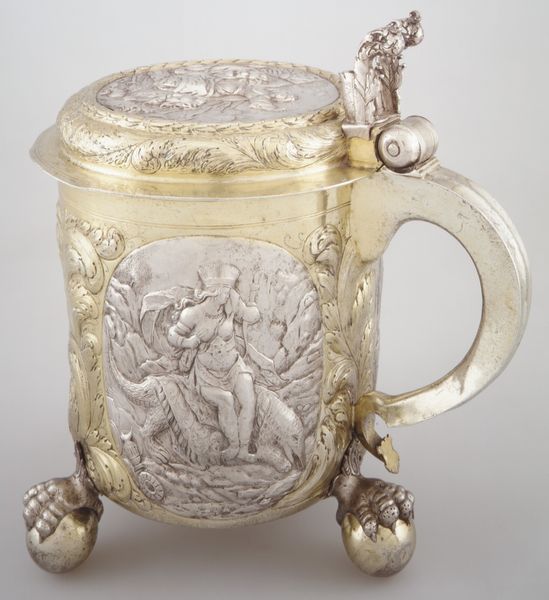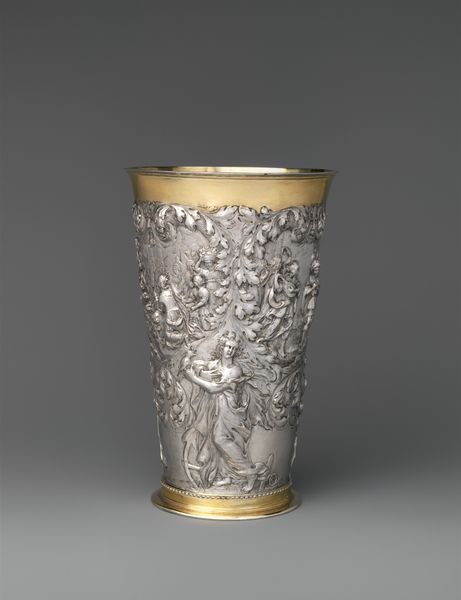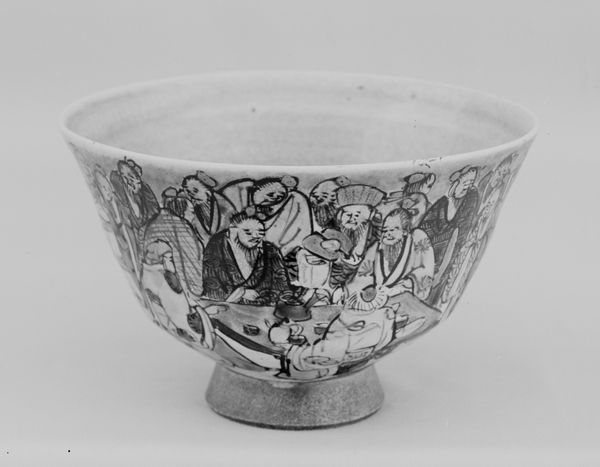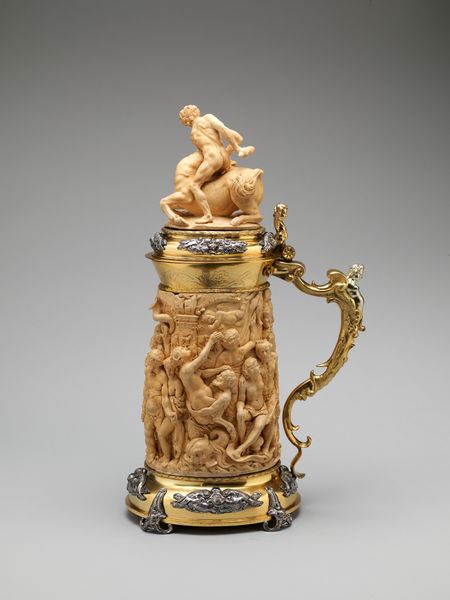
silver, metal, sculpture
#
silver
#
baroque
#
metal
#
sculpture
#
genre-painting
#
history-painting
Dimensions: 5 1/2 × 4 7/8 × 4 7/8 in. (14 × 12.38 × 12.38 cm)
Copyright: Public Domain
This silver beaker was crafted by Melchior Lauch in seventeenth-century Germany. It depicts an encounter between Europeans and Indigenous people. The scene reflects the period’s burgeoning interest in, and often skewed understanding of, newly ‘discovered’ lands and their inhabitants. The image creates meaning through visual codes of the time. The Indigenous people are adorned with what were considered exotic decorations, while their poses and gestures might be interpreted through a European lens. Consider the historical context: this beaker was made during a period of intense colonial expansion. European powers were vying for control over territories and trade routes. The economic structures of the time depended heavily on exploiting resources and labor from these lands. To fully understand this artwork, historians would delve into travel literature, colonial records, and ethnographic studies of the period. The meaning of art is always contingent on its social and institutional context.
Comments
minneapolisinstituteofart almost 2 years ago
⋮
This beaker depicts the battles and warfare of different tribes in Mozambique, as described and imagined by the Dutch merchant Jan Huyghen van Linschoten (1563-1611), who had lived in Goa, India, for six years, and wrote an influential account of his travels through Africa and India. It was made in Leipzig, Germany, which was a center of trade, based on engravings in Jan Huyghen’s book. Such depictions of exotic peoples in faraway places were not always accurate. Here a Mozambiquian chief is pictured as a Native American.
Join the conversation
Join millions of artists and users on Artera today and experience the ultimate creative platform.
